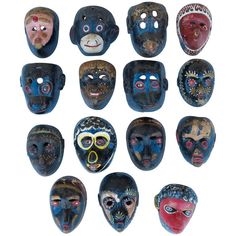Most of the allergies around the world are caused by the same types of food.
Allergies cause side reactions to substances (allergens) such as food, dust, pollen, etc. Food allergies are common as food allergens are mostly consumed unknowingly. Many foods contain trace amounts of allergens that are difficult to eliminate.
Children and infants are more likely to develop food allergies than adults. However, most children outgrow their allergies during their teens. Milk, eggs, wheat and soy allergies are the most common allergies. On the other hand, peanut allergies seem to be much more persistent, with only about 20% of peanut-allergic children outgrowing peanut allergies in adulthood.
The nature of the symptoms and their severity depend on factors such as the amount of allergen taken, the individual, and the length of time since previous exposure. Some people develop only mild symptoms, while others may experience more severe symptoms.
Common signs and symptoms of allergic reactions include nausea, vomiting, hives, itching, swelling of the tongue, rash, shortness of breath, and others. These symptoms can occur within minutes to hours of exposure to allergens.
Serious symptoms occur with exposure to the circulatory system and the respiratory tract. This is called anaphylaxis. When symptoms cause a drop in blood pressure or a narrowing of the trachea preventing breathing, the victim is considered to be in anaphylactic shock. Death can result from severe hypotension in combination with respiratory and cardiovascular complications.
If the allergen is unknowingly swallowed, medications such as epinephrine can be administered. You can also use antihistamines and steroids.
The most common food allergies are caused by milk, eggs, peanuts, tree nuts, seafood, shellfish, soy and wheat. They are commonly referred to as the "Big Eight". Other common food allergies are caused by the consumption of corn and fish.
10. Seeds
The seeds are high in protein, which can cause allergic reactions. Seeds such as sunflowers and sesame seeds are known to induce anaphylactic shock. Other examples of seeds that can be allergic are chias seeds, pumpkin seeds, mustard seeds, and poppy seeds. The seeds are mainly used to make bread, pastries, sauces, and dressings.
People who are allergic to seeds should be careful about consuming such food. However, some seed oils are highly refined, a process that removes the protein from the oils. Seed allergens can also be exposed through cosmetic and medical products.
9. Milk
Milk allergies are most common in children, although most outgrow them by the time they reach sixteen years of age. This allergic reaction is mainly manifested by vomiting and indigestion. People who are allergic to cow's milk may also be allergic to the milk of other animals, such as sheep and goats. Traces of milk can be found in cakes, fried foods, chocolate, and condiments. People with milk allergies should also stay away from dairy products such as yogurt, ice cream, and cheese.
8. Eggs
The second most common allergen in children. Allergic reactions can be experienced by consuming eggs from chicken, ducks, quail, and turkeys. Most people would be allergic to all of these eggs. Some common symptoms of egg allergic reactions are hives, skin rashes, digestive difficulties, and nasal congestion. Such reactions are rarely life-threatening. Eggs can be found in cakes, pies, and sauces.
7. Peanuts
One of the most serious food allergies. Symptoms include serious consequences such as asthma and cardiac arrest. Anaphylaxis may occur. Other symptoms include itching, eczema, continuous coughing, and loss of breathing. This can be the result of directly consuming foods that have traces of peanuts or through accidental contact with peanuts. Peanuts can be found in baked goods, cereals, chocolate, vegetarian meat substitutes, baked goods, and sauces.
6. Nuts
Includes almonds, coconuts, cashews. A person who is allergic to one type of nut has a higher chance of being allergic to other types. Therefore, many tree nut allergy sufferers are often advised to avoid all nuts. Patients are advised to avoid peanuts due to the greater likelihood of cross-contact with the nuts during manufacture and processing.
5. Soy
Soy allergic reactions are usually mild, although rare, anaphylaxis may occur. Can be found in soy-based sauces, soy milk, candy, chocolate, and chewing gum. Common symptoms of allergic reactions are nausea, rash, stomach pain, runny nose, and wheezing. Most people with soy allergies are also allergic to peanuts and tree nuts.
4. Wheat
Allergic reactions can range from mild, like a rash, to severe, like anaphylaxis. In addition to being a food allergy, it can also be a contact allergy caused by exposure to wheat.
Wheat allergies can be obtained from wheat protein, wheat seeds, and other parts of wheat. Wheat is mainly used in baked goods.
3. Fish
Allergic reactions to fish can cause anaphylaxis. Other symptoms include skin rashes, diarrhea, and nausea. Halibut, tuna and salmon are the most common types of fish that people are allergic to. Fish protein can be airborne, released during cooking, and can be hazardous.
Handling fish or contact with surfaces that may contain fish oil can cause allergic reactions. Fish can be found in sauces, salads, and oils.
2. Molluscs
Allergic reactions to shellfish are similar to those caused by fish. Doctors advise not to consume a fish product without first consulting a specialist. Examples of shellfish are lobster, crabs, and shrimp. Possible sources of shellfish are toppings, salads, and sauces.
1. Corn
Allergic reactions to corn are the result of eating corn or foods containing corn-based ingredients, or after being exposed to corn pollen. Mild symptoms include nausea, headaches, hives, and vomiting. Allergies can lead to anaphylaxis. Some foods that contain corn are cereals, corn oils, corn syrups, cornmeal, sauces, jams, and snacks. Corn ingredients can also be found in non-food items such as pet food, clothing, dishwashing liquid, crayons, cosmetics, toothpaste, paint, plastics, and shampoo.
And here is a video clip about a dozen much rarer types of allergies:



